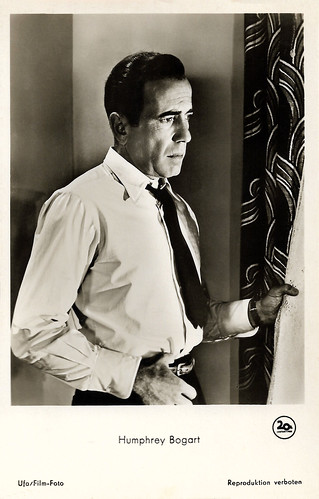
German postcard by UFA/Film-Foto, Berlin-Tempelhof, no. FK 305. Photo: 20th Century Fox. Humphrey Bogart in The Maltese Falcon (John Huston, 1941).

British postcard by Astra. Caption: Humphrey Bogart, the Tough Guy for some of Hollywood's finest thrillers, has just earned fresh laurels for his work in the 'all-male' epic, "Treasure of Sierra Madre."
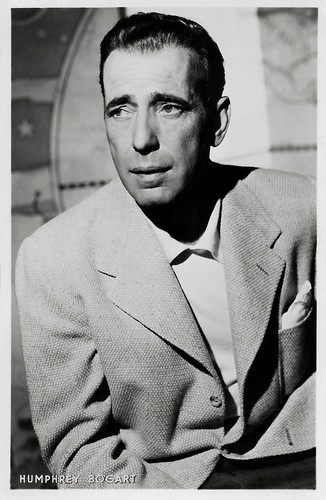
Dutch postcard. Photo: Warner Bros.

Dutch postcard, no. 3428. Photo: Warner Bros.
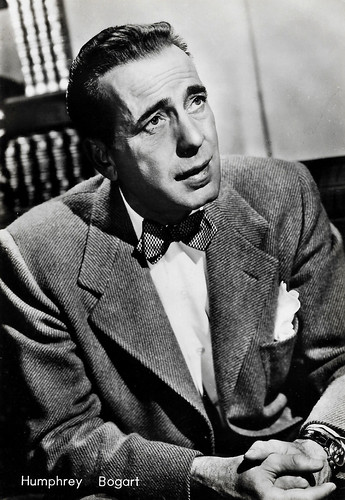
Italian postcard by Bromostampa, Milano, no. 103.

Italian postcard by Rotalfoto, Milano, no. 72. Photo: Columbia / CEIAD.

French postcard in the Collection Magie Noire by Éditions Hazan, Paris, 1990, no. 6224. Humphrey Bogart in Casablanca (Michael Curtiz, 1942).
Inadequate acting
Humphrey DeForest Bogart was born in New York City, New York, in 1899. His mother was Maud Humphrey, a famed magazine illustrator and suffragette, and his father was Belmont DeForest Bogart, a moderately wealthy surgeon who was secretly addicted to opium. He had two younger sisters, Frances and Catherine 'Kay' Bogart. Maud Bogart's drawing of her baby Humphrey appeared in a national advertising campaign for Mellin's Baby Food.
'Bogie' was educated at Trinity School, NYC, and was sent to Phillips Academy in Andover, Massachusetts, in preparation for medical studies at Yale. He was expelled from Phillips and joined the U.S. Naval Reserve in 1918. During the First World War, he served on the troopship USS Leviathan in the North Atlantic.
From 1920 to 1922, he managed a stage company owned by family friend William A. Brady (the father of actress Alice Brady), performing a variety of tasks at Brady's film studio in New York. He then began regular stage performances, but critic Alexander Woollcott described his acting in a 1922 play as inadequate. In 1930, he gained a contract with Fox. He had his film debut in a ten-minute short, Broadway's Like That (Arthur Hurley, 1930), co-starring Ruth Etting and Joan Blondell. Fox released him after two years.
After five years of stage and minor film roles, he had his breakthrough role in The Petrified Forest (Archie Mayo, 1936) from Warner Bros. He won the part over Edward G. Robinson only after the star, Leslie Howard threatened Warner Bros. that he would quit unless Bogart was given the key role of Duke Mantee, which he had played in the Broadway production with Howard. The film was a major success and led to a long-term contract with Warner Bros.
From 1936 to 1940, Bogart appeared in 28 films, usually as a gangster and twice in Westerns. He even played in a horror film, The Return of Doctor X (Vincent Sherman, 1939), in which he played a rejuvenated, formerly-dead scientist. He averaged a film every two months between 1936 and 1940, sometimes working on two films at the same time. His only substantial role during this period was in Dead End (William Wyler, 1937), as a gangster modelled after Baby Face Nelson. Bogart used these years to begin developing his film persona: a wounded, stoical, cynical, charming, vulnerable, self-mocking loner with a code of honour.

British 'Real Photograph' postcard, no. 138.

Italian postcard by Cinema-Illustrazione, Milano, no. 16, Serie 1. Photo: Fox Film. Mona Maris and Humphrey Bogart in A Devil with Women (Irving Cummings, 1930).
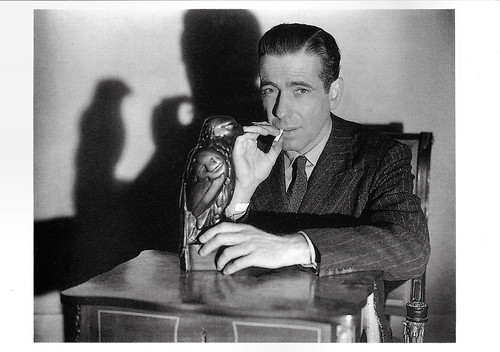
Swiss-German-British postcard by News Productions, Baulmes / Filmwelt Berlin, Bakede / News Productions, Stroud, no. 56495. Photo: Warner Bros / Collection Cinémathèque Suisse, Lausanne. Humphrey Bogart in The Maltese Falcon (John Huston, 1941).

British postcard in the Picturegoer Series, London, no. W. 271. Photo: Columbia.

British postcard in the Picturegoer Series, London, no. 1139a. Photo: Walter Wanger.

Spanish card by JDP, Valencia, no. 1461. Photo: Humphrey Bogart and Candy Toxton (Susan Perry) in Knock on Any Door (Nicholas Ray, 1949).

Spanish card, no. 402. Photo: Warner Bros.
I'm no Communist
Humphrey Bogart's landmark year was 1941 with roles in such classics as High Sierra (Raoul Walsh, 1941) with Ida Lupino and as Sam Spade in one of his most fondly remembered films, The Maltese Falcon (John Huston, 1941) with Mary Astor and Peter Lorre. Thus, he often capitalised on parts George Raft had rejected. Raft had also passed Casablanca (Michael Curtiz, 1942) with Ingrid Bergman, for which Bogart won his first Oscar nomination and which made him a true international star.
In 1944, Bogart fell in love with the 19-year-old Lauren Bacall when they filmed To Have and Have Not (Howard Hawks, 1944). They married in 1945. They also co-starred in the classic Film Noir The Big Sleep (Howard Hawks, 1946), Dark Passage (Delmer Daves, 1947), and Key Largo (John Huston, 1948). Bogart, despite his erratic education, was incredibly well-read and he favoured writers and intellectuals within his small circle of friends.
In 1947, he joined his wife Lauren Bacalland other actors in protesting the House Un-American Activities Committee witch hunts. They both eventually succumbed to pressure and distanced themselves from the Hollywood Ten in a March 1948 Photoplay Magazine article penned by Bogart titled 'I'm No Communist'. That year, he made The Treasure of the Sierra Madre (John Huston, 1948) with Walter Huston. He also formed his own production company and produced the Film-Noir Knock on Any Door (Nicholas Ray, 1949). Ray also directed him in one of his best roles in another Film-Noir, In a Lonely Place (Nicholas Ray, 1950) with Gloria Grahame.
Bogie won the Best Actor Academy Award for his part as a cantankerous river steam launch skipper in The African Queen (John Huston, 1951) opposite Katharine Hepburn. He was nominated for another Oscar for his part as Captain Queeg in Mutiny on the Caine (Edward Dmytryk, 1954), a film made when he was already seriously ill. Other significant roles included The Barefoot Contessa (Joseph L. Mankiewicz, 1954) with Ava Gardner and his on-screen competition with William Holden for Audrey Hepburn in Sabrina (Billy Wilder, 1954).
In 1957, Humphrey Bogart died in his sleep at his Hollywood home following surgeries and a battle with throat cancer. He usually smoked 40 cigarettes a day. Bogart had just turned 57. Bogart is interred at Forest Lawn, Glendale, CA, in the Garden of Memory, Columbarium of Eternal Light. He was four times married and all of his wives were actresses: Helen Menken (1926-1927), Mary Philips (1928-1938), Mayo Methot (1938-1945), and Lauren Bacall (1945-1957). Bogart and Bacall, had two children, Stephen H. Bogart (1949) and Leslie Bogart (1952). Stephen discussed his relationship with Bogie in the book, 'Bogart: In Search of My Father' (1996).

With Lauren Bacall. French postcard by Imp. De Marchi Frères, Marseille.

Big Belgian collectors card by Chocolaterie Clovis S.P.R.L., Pepinster, no. 35. Photo: Warner Bros.

Belgian postcard, no. 51. Photo: Warner Bros.

French postcard by Editions P.I., Paris, no. 288. Photo: Warner Bros. We have another Bogart postcard by Editions P.I. with the same number:

French postcard by Editions P.I., Paris, no. 288. Photo: Warner Bros.

Italian postcard by Bromofoto, Milano, no. 317. Photo: Warner Bros.
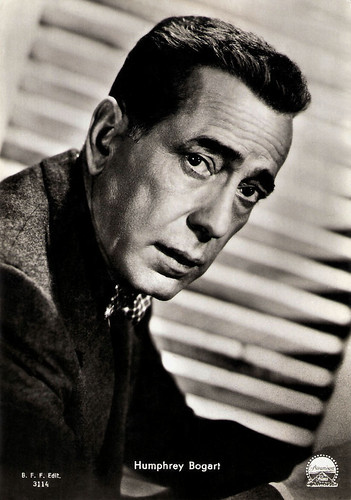
Italian postcard by B.F.F. Edit. (Casa Editr. Ballerini & Fratini, Firenze), no. 3114. Photo: Paramount.

German postcard by Kunst und Bild, Berlin. Photo: Columbia Pictures.

German postcard. Photo: Paramount Pictures.
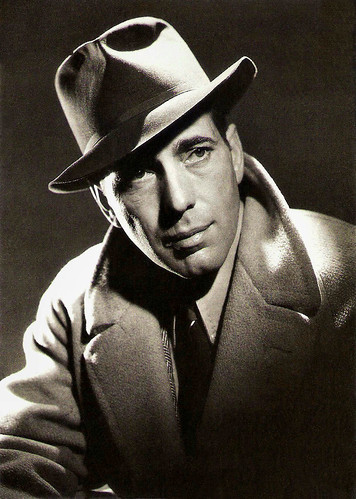
German postcard by Edition Cicero, Hamburg, no. 3114, no. 150.07, 1988. Photo: George Hurrell, 1940 / The Kobal Collection.
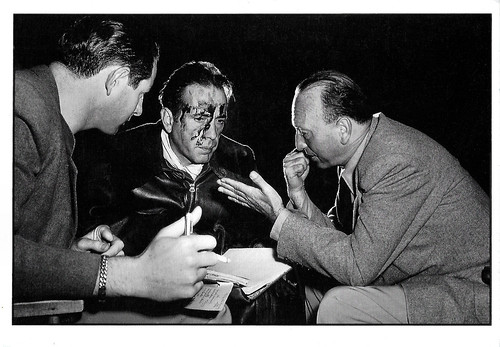
French postcard in the Entr'acte series by Éditions Asphodèle. Mâcon, no. 00/8. Director Michael Curtiz, Humphrey Bogart and scriptwriter Herschel Daugherty on the set of Passage to Marseille (Michael Curtiz, 1944).
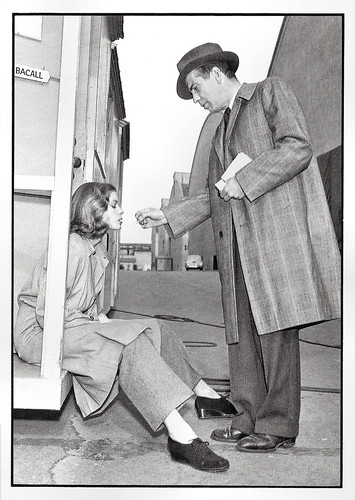
French postcard in the Entr'acte series by Éditions Asphodèle. Mâcon, no. 001/21. Lauren Bacall and Humphrey Bogart at the set of Confidential Agent (Herman Shumlin, 1945). Caption: Between two love scenes with Charles Boyer, a break for Lauren Bacall, with her husband Humphrey Bogart.
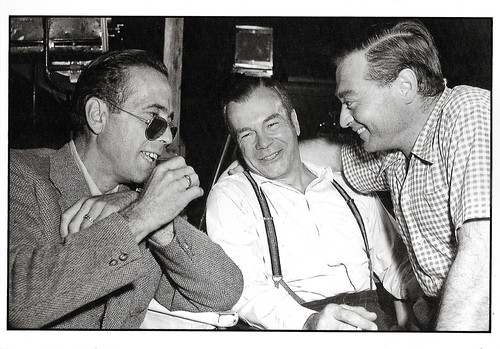
French postcard in the Entr'acte series by Éditions Asphodèle. Mâcon, no. 001/14. Humphrey Bogart, Gordon Carveth and Peter Lorre at the set of Confidential Agent (Herman Shumlin, 1945). Caption: Humphrey Bogart and Gordon Carveth visit their friend Peter Lorre on the set of Confidential Agent; Lorre is the star.

French postcard in the Entr'acte series by Éditions Asphodèle, Mâcon, no. 004/13. Photo: Collection B. Courtel / D.R. Humphrey Bogart and Edward G. Robinson on the set of Key Largo (John Huston, 1948). Caption: Ouch! My ears! Wouldn't Humphrey Bogart appreciate the efforts of his partner Edward G. Robinson recording a song?

French postcard in the 'Entr'acte' series by Editions Asphodèle, Mâcon. Photo: Director Edward Dmytryk and Humphrey Bogart on the set of The Left Hand of God (Edward Dmytryk, 1955). In the background: Gene Tierney. Collection: B. Courtel / D. R.
Sources: Ed Stephan (IMDb), Wikipedia, and IMDb.
This post was last updated on 12 June 2023.
No comments:
Post a Comment